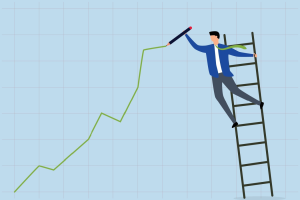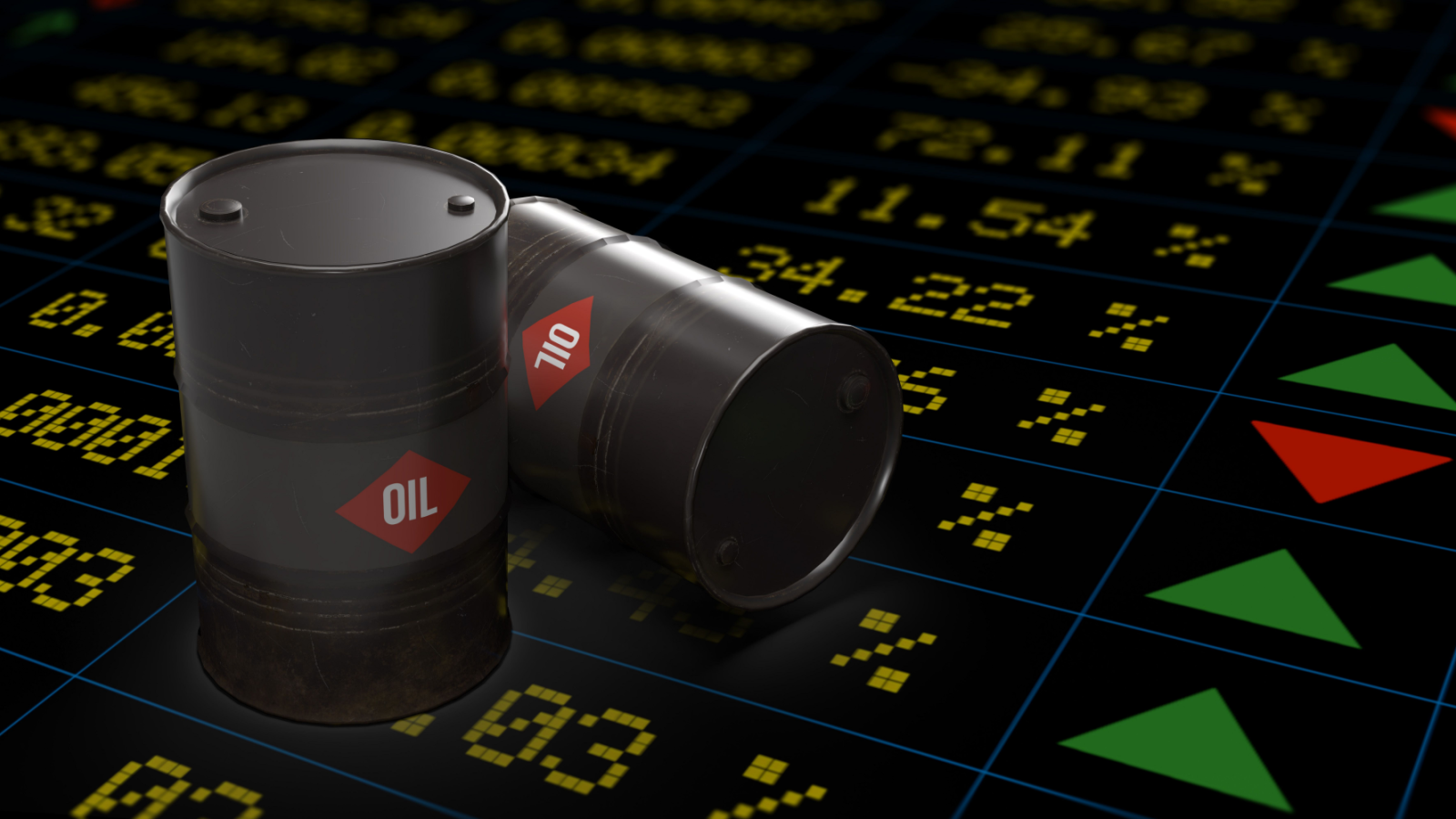
Personally, I’m tired of the focus on Jerome Powell and the Federal Reserve. We just went through the fastest rate hike cycle in history, and any incremental rate hikes now matter far less than the lagged effects of what has already taken place. I’d argue what matters far more now to inflation is the outlook for oil and energy prices more broadly. Why? This is because of cost-push inflation’s impact on every single part of the global economy.
When I look at oil prices here, it does look like we’re at an important juncture. There’s clearly been a recovery, but we are at resistance now. If oil prices were to break out here and suddenly surge higher, inflation expectations would pick back up meaningfully. This would call into question just how likely the Fed is to end its rate-hiking campaign.
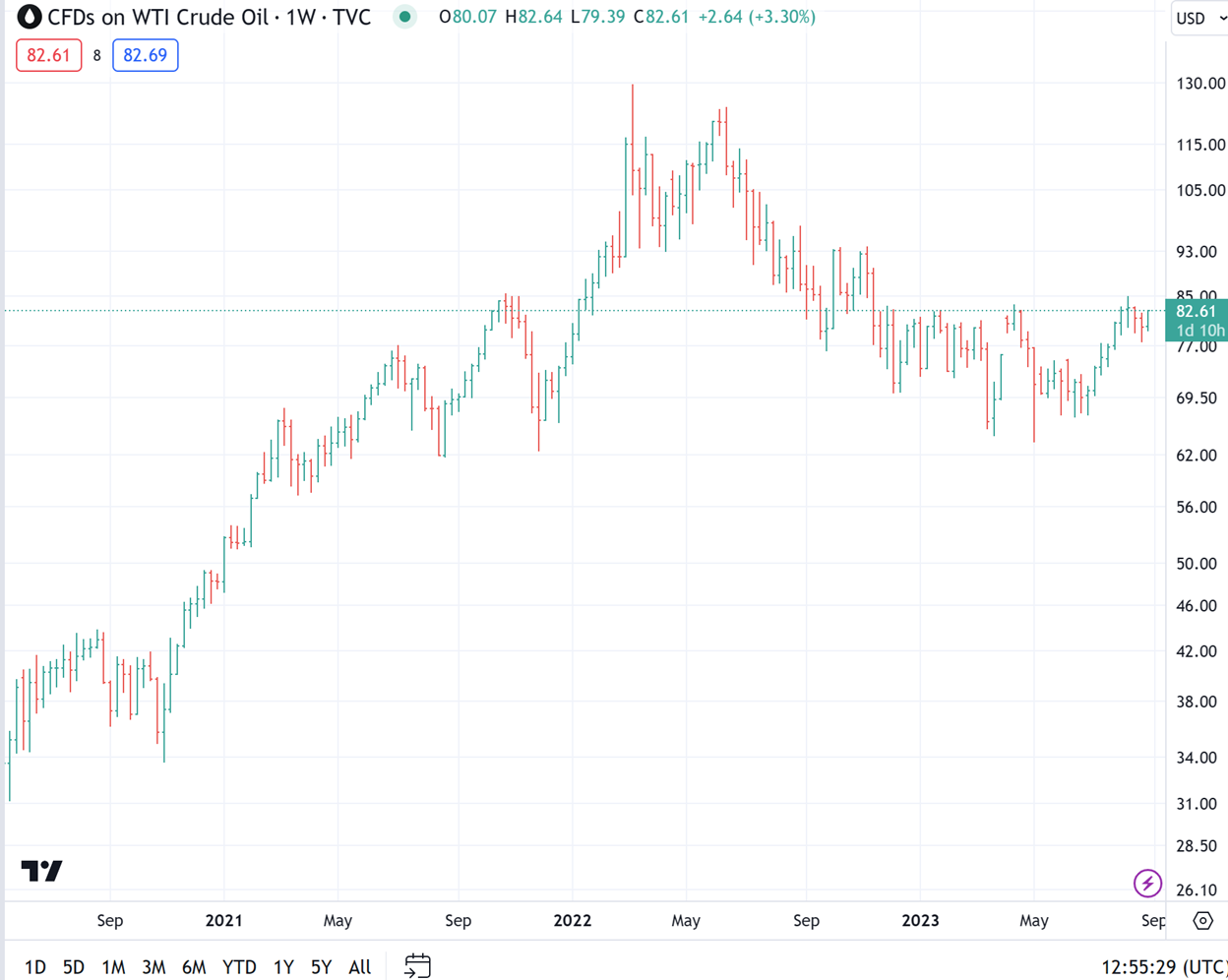
Investors’ expectations have a significant impact on bond prices, where yield is a function on the Treasury side of growth and inflation relative to duration.
What Oil Prices Can Tell Us Now
Here’s where it gets to be interesting. If we look at the iShares TIPS Bond ETF (NYSEARCA:TIP) relative to the iShares 3-7 Year Treasury Bond ETF (NASDAQ:IEI), we can see the relationship is falling. This is one way of tracking investor demand for inflation protection. If the ratio is rising, that suggests investors expect more inflation. If the ratio is falling relative to nominal Treasuries, it suggests the opposite.
Personally, I think this looks like massive distribution, meaning we could see a period of significant disinflation. However, this again will be heavily dependent on energy prices.
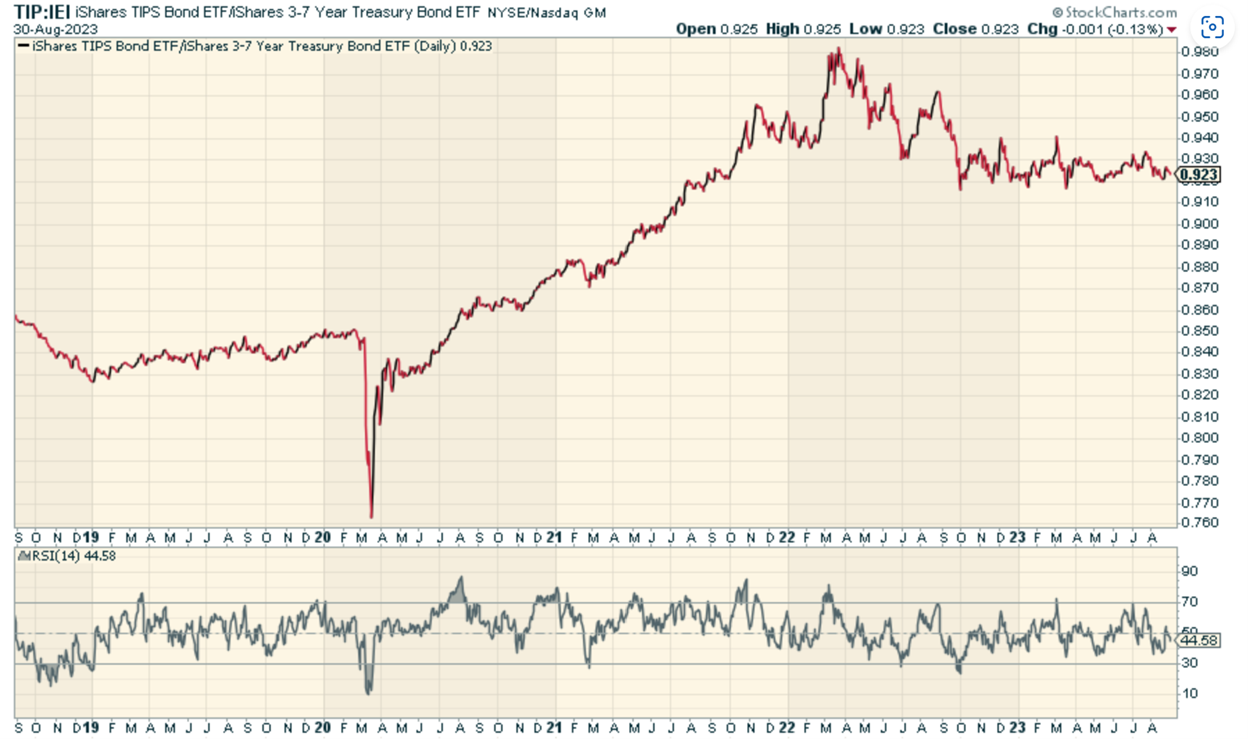
It’s more than just oil prices which will be important to inflation expectations. Gas prices have a significant impact on consumers, and their inflation expectations tend to increase when fuel prices rise as well. If we look at gasoline futures, there’s not much going on price wise. Stability here would further argue that inflation expectations are vulnerable to falling relative to the lagged effects of interest rate policy.
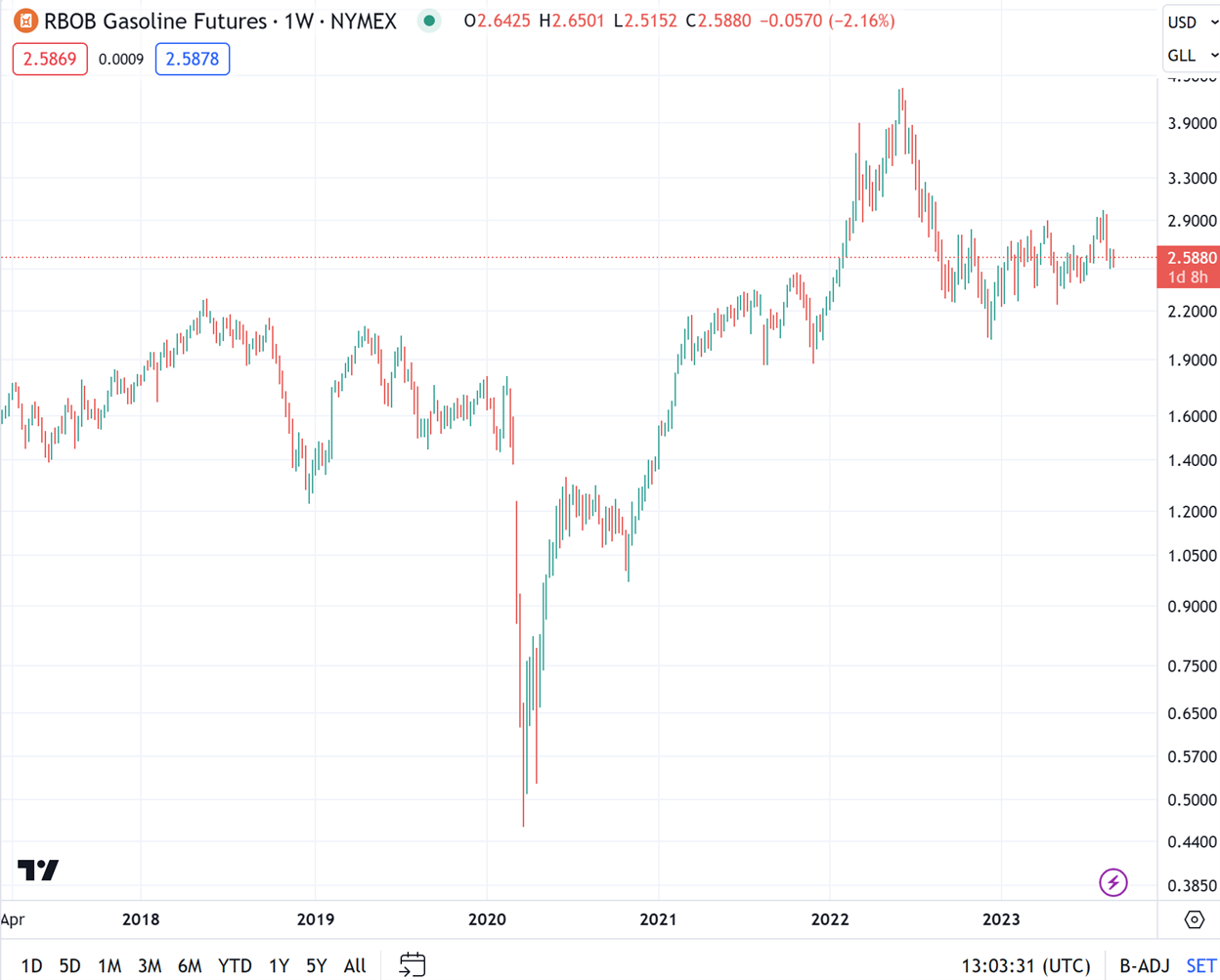
One of the main reasons oil and gas could continue to weaken is China. A weak China could lead to less competition for global commodities, thus weighing on prices. Yes – there are some recent actions being taken by policymakers in China to accelerate growth, but it’s debatable how much can be done given its huge debt load and a society that refuses to spend after brutal lockdowns over the last three years.
The Bottom Line
The economic landscape will be shaped by various factors, including energy prices, global economic conditions, and central bank policies. If oil and gasoline prices don’t rise further, or even fall, this will have a large impact on disinflation. It could potentially lead to outright deflation, particularly if I’m right about a credit event that could rock the bond market.
If oil and gasoline prices were to surprisingly surge, that would meaningfully complicate the inflation picture. Either way, the Fed’s next move won’t matter anywhere near as much as what happens next to energy prices, and I suspect energy prices are more likely to surprise on the downside in the months ahead.
On the date of publication, Michael Gayed did not hold (either directly or indirectly) any positions in the securities mentioned in this article. The opinions expressed in this article are those of the writer, subject to the InvestorPlace.com Publishing Guidelines.






